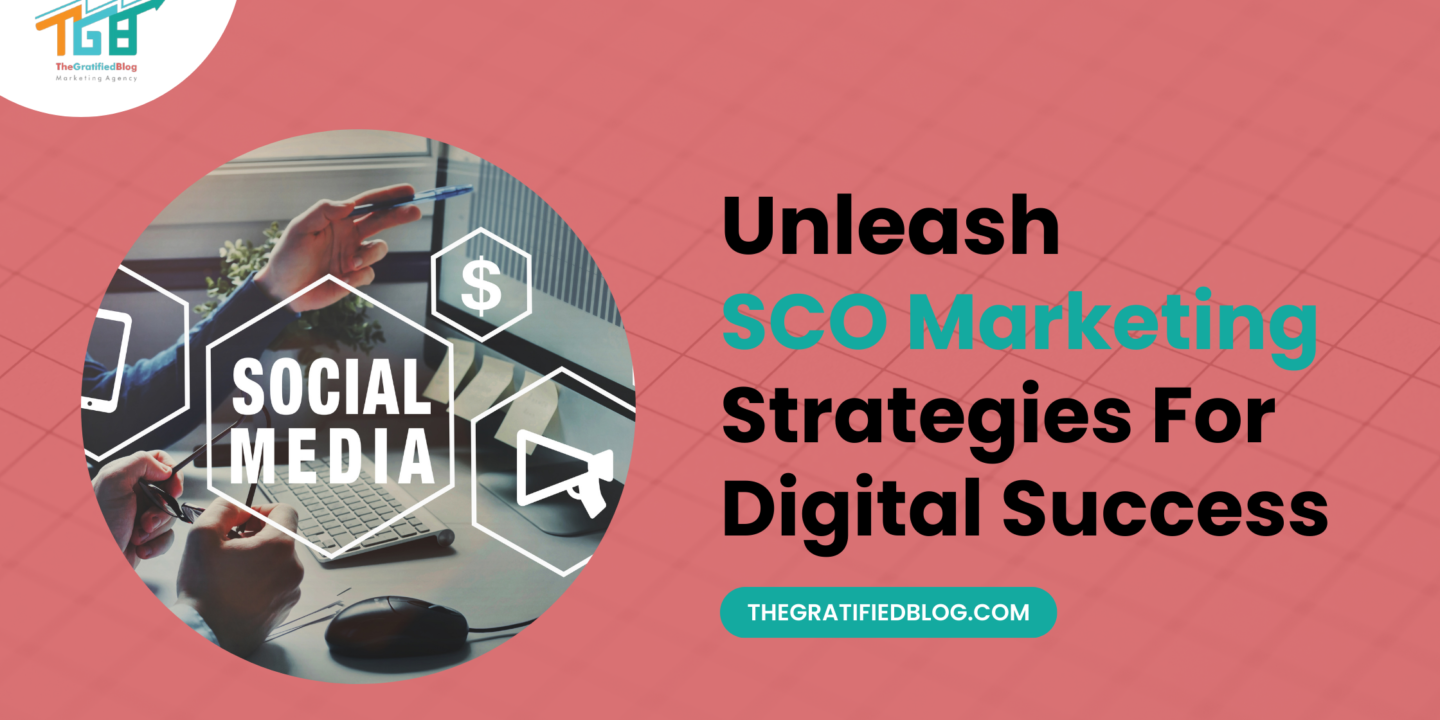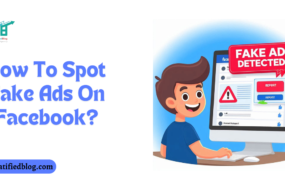
In the constantly changing digital marketing domain, maintaining relevance and visibility to your target audience requires strategic maneuvers beyond traditional methods. That is where SCO marketing, or Social Channel Optimization, comes into play. As companies depend increasingly on social media platforms to connect with their audience, understanding and leveraging SCO strategies have become essential for maximizing brand impact and engagement.
This comprehensive guide delves deep into SCO marketing, exploring its essential elements, benefits, strategies, and best practices. Whether you’re a seasoned digital marketer looking to enhance your social media strategies or a business owner aiming to leverage social channels effectively, this blog will provide the expertise and insights needed to excel in SCO marketing.
So, let’s get started by revealing:
What’s SCO?
SCO is an acronym that can represent three distinct concepts in digital marketing: Social Channel Optimization, Search Channel Optimization, and Sales Cycle Optimization. However, in digital marketing practices, SCO is predominantly recognized as Social Channel Optimization.
Now, let’s dive deeper into SCO Marketing
What Is SCO Marketing?
SCO Marketing, or Social Channel Optimization Marketing, is a strategic approach to maximizing a brand’s visibility, engagement, and influence across diverse social media channels. It involves optimizing every aspect of a brand’s presence on social channels to ensure maximum reach, audience interaction, and conversion rates.
What is the difference Between SEO And SCO in Marketing?
The distinction between SEO (Search Engine Optimization) and SCO (Social Channel Optimization) lies in their scope within the broader marketing field. While both aim to boost content visibility and drive website traffic, they operate within different realms. SCO is a comprehensive marketing umbrella encompassing various channels beyond search engines, while SEO specifically targets search engine algorithms.
SEO focuses on strategies to improve organic search traffic by optimizing content to rank higher and attain top positions on search engine results pages (SERPs) organically, without relying on paid advertisements. On the other hand, SCO extends beyond SEO by integrating tactics such as advertising, social media optimization, video marketing, podcast engagement enhancement, and more.
So, while SEO is a crucial subset of SCO, SCO encompasses a broader range of marketing channels and strategies, making it a more holistic approach to maximizing content visibility and engagement across diverse digital platforms.
Now, let’s delve into the crucial element of SCO marketing and the advantages it can bring.
Critical Aspects Of SCO Marketing
- Profile Optimization: Make sure that social media profiles are filled out, accurate, and aligned with the brand’s image and messaging. This includes using relevant keywords, high-quality visuals, and compelling descriptions.
- Content Strategy: Develop a tailored content strategy for each social media platform based on audience preferences, trends, and marketing objectives. This involves creating diverse content formats, such as posts, videos, stories, and infographics, to engage different audience segments.
- Engagement Tactics: Implementing strategies to foster meaningful interactions with the audience, including responding to comments and messages promptly, running interactive campaigns, and encouraging user-generated content.
- Analytics and Performance Tracking: Utilizing tools to track critical performance metrics, including reach, engagement, click-through rates, and conversions
Analyzing data allows marketers to make data-driven decisions, optimize strategies, and identify areas for improvement.
Benefits Of SCO Marketing
The benefits of SCO (Social Channel Optimization) Marketing are diverse and impactful, making it a crucial strategy for businesses aiming to excel in the digital realm. Here are the key benefits:
- Increased Brand Visibility and Reach: By optimizing social media profiles, content, and engagement strategies, SCO Marketing enhances a brand’s visibility across social channels. This increased visibility leads to a broader reach, allowing the brand to connect with a larger audience and draw in potential customers who might yet be reached through traditional marketing channels.
- Improved Audience Engagement and Interaction: SCO Marketing fosters meaningful interactions with the audience through tailored content, prompt responses to comments and messages, and interactive campaigns. This results in higher levels of engagement, as audiences feel more connected and valued, leading to increased loyalty and advocacy.
- Enhanced Brand Reputation and Credibility: Consistent and strategic presence on social media platforms builds brand reputation and credibility. Engaging content, positive interactions, and transparent communication contribute to establishing trust with the audience. This, in turn, boosts the brand’s reputation and credibility, enhancing its appeal to customers and stakeholders.
- Higher Conversion Rates and ROI: One of the ultimate goals of SCO Marketing is to drive conversions and achieve a favorable return on investment (ROI). By optimizing social channels, targeting the right audience, and delivering relevant content, SCO strategies can lead to higher conversion rates, whether in the form of website visits, leads, sales, or other desired actions. The measurable impact of SCO efforts contributes directly to a positive ROI for marketing initiatives.
Let’s now explore the crucial section of the blog, which focuses on strategies for SCO Marketing
Effective Strategies For SCO Marketing
Target Audience Analysis And Segmentation
Understanding your target audience is foundational to SCO Marketing success. Conducting thorough audience analysis helps identify your audience segments’ demographics, interests, behaviors, and pain points.
This data enables you to create targeted content and engagement strategies that resonate with specific audience groups. Segmentation further refines this approach by dividing your audience into subgroups based on common characteristics or behaviors.
Tailoring your SCO efforts to address each segment’s needs and preferences enables you to significantly enhance relevance and engagement.
Content Creation And Optimization For Each Social Channel

Each social media platform has its dynamics, audience demographics, and best-performing content formats. A key SCO strategy is to create and optimize content tailored to each channel’s strengths.
For example, visually appealing and concise content often performs well on Instagram, while informative and engaging posts are more suited for LinkedIn.
Optimizing content involves using relevant keywords, hashtags, compelling visuals, and engaging CTAs (Calls to Action) to maximize reach and engagement on each platform. Adapting content strategies to align with platform algorithms and audience preferences is essential for effective SCO Marketing.
Consistent Branding And Messaging Across Platforms

Brand consistency is vital in building brand identity and recognition across social channels. Sustaining uniform branding elements like logos and color schemes, tone of voice, and messaging ensures that your brand remains cohesive and memorable to the audience.
Consistency fosters trust and credibility, as users can quickly identify and connect your brand with particular values or offerings. Whether it’s the language used in posts, visual aesthetics, or brand storytelling, maintaining coherence in branding across platforms reinforces your brand’s identity and strengthens its impact on SCO Marketing efforts.
Leveraging Multimedia Content For Engagement

Multimedia content, including videos, images, infographics, and interactive content, captures audience attention and drives engagement. Incorporating diverse multimedia formats into your SCO strategies adds variety and richness to your content, making it more appealing and shareable.
Videos, in particular, have significantly impacted social media engagement, with live videos, stories, and tutorials gaining popularity. Leveraging multimedia increases engagement, allows you to convey complex messages effectively, and showcases your brand’s personality and creativity.
Utilizing Paid Promotions and Advertising Where Necessary:
While organic reach is valuable, paid promotions and advertising can amplify your SCO efforts and reach a broader audience. Utilizing targeted advertising options on social platforms enables you to get specific demographics, interests, and behaviors that align with your target audience.
Paid promotions can boost visibility, drive website traffic, generate leads, and facilitate conversions. Strategic budget allocation towards paid campaigns and organic SCO strategies can yield significant returns and complement your overall social media marketing objectives effectively.
By implementing these strategies effectively, businesses can enhance their SCO Marketing efforts, maximize engagement, and achieve tangible results regarding brand visibility, audience interaction, and conversions.
Best Practices And Tips For SCO Marketing
- Regularly Update Social Media Profiles: Keeping social media profiles updated with current information, visuals, and branding ensures they accurately represent your brand. Regular updates also signal activity and relevance to followers and algorithms, contributing to a positive impression and increased engagement.
- Interact with the audience via comments and messages: Actively responding to comments, messages, and mentions demonstrates a commitment to customer interaction and fosters community. Engaging with your audience builds rapport, encourages discussions, and enhances brand loyalty, contributing to a vibrant and interactive social media presence.
- Track and evaluate performance metrics: Regularly monitoring key metrics such as reach, engagement rates, click-through rates, conversions, and audience demographics provides valuable insights into the effectiveness of your SCO strategies. Analyzing data helps identify trends, strengths, weaknesses, and opportunities for optimization, enabling informed decision-making and strategy refinement.
- Remain informed about social media trends and algorithm changes: Remaining informed about evolving social media trends, platform features, and algorithm updates is crucial for staying ahead in SCO Marketing. Adapting strategies to align with current trends and algorithm changes ensures relevance, visibility, and effectiveness in reaching and engaging your target audience amidst dynamic digital landscapes.
- A/B Testing and Optimizing Strategies Based on Data Insights: Conducting A/B testing experiments with different content formats, posting times, messaging approaches, and ad campaigns helps identify what resonates best with your audience. Analyzing data insights from A/B tests enables iterative optimization of SCO strategies, fine-tuning content, targeting, and engagement tactics for maximum impact and results.
Conclusion
With a solid grasp of both SEO and SCO, it’s essential to differentiate between them and utilize SCO’s potent capabilities to enhance your digital marketing strategies. Through SCO’s integrated approach to optimizing social platforms, engaging audiences, analyzing metrics, and staying updated with trends, you can discover fresh avenues for boosting brand visibility, engaging your audience, and driving business growth.
However, if you have any further inquiries regarding the blog content, don’t hesitate to post them in the comment section. We’re here to assist and provide clarifications as needed.
Thanks for reading 🙂








No Comments